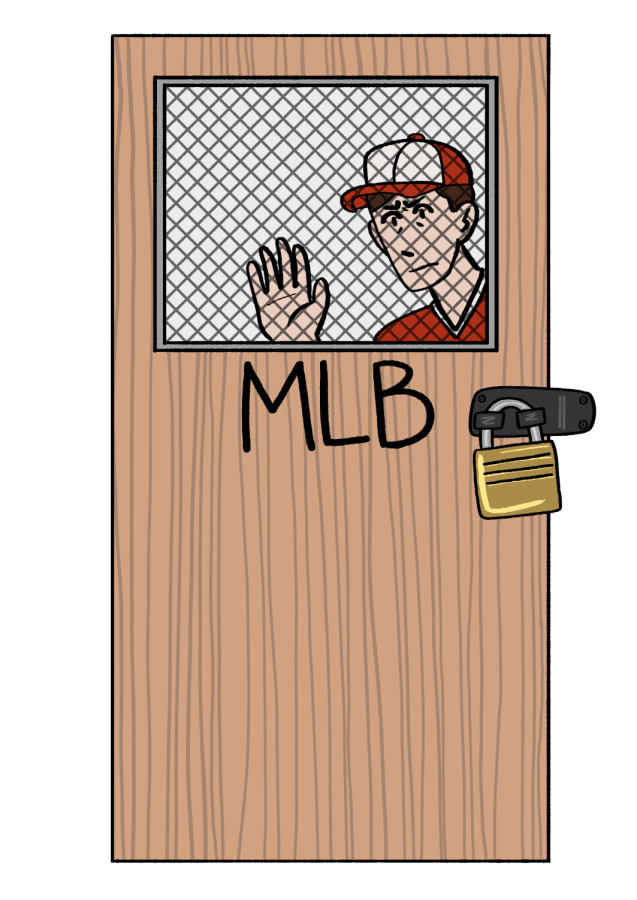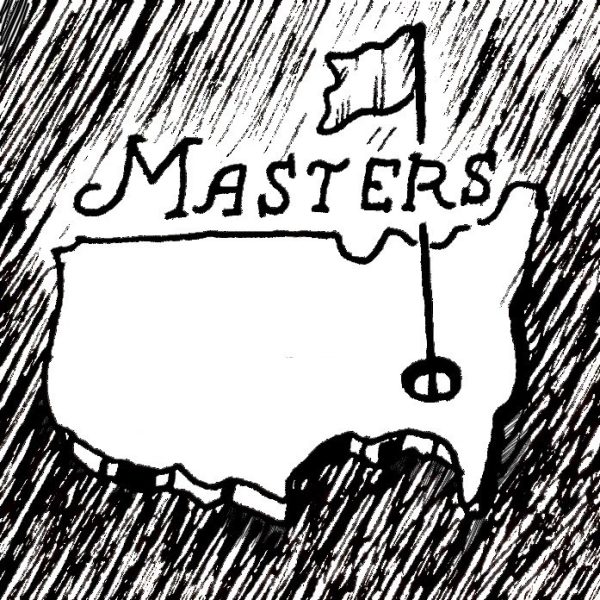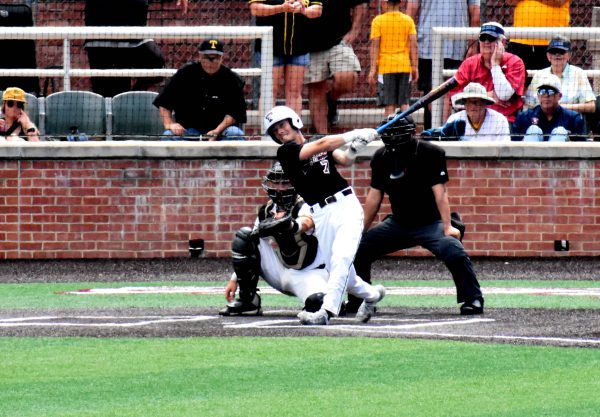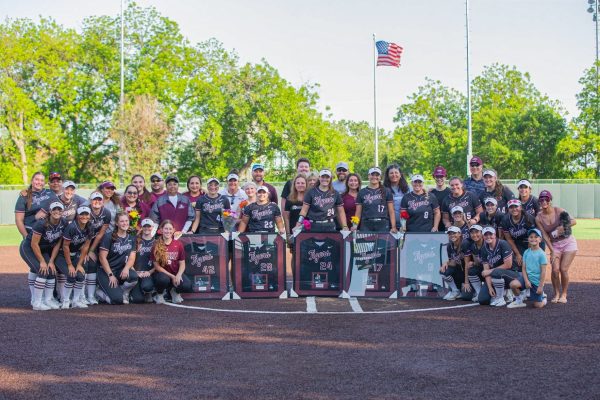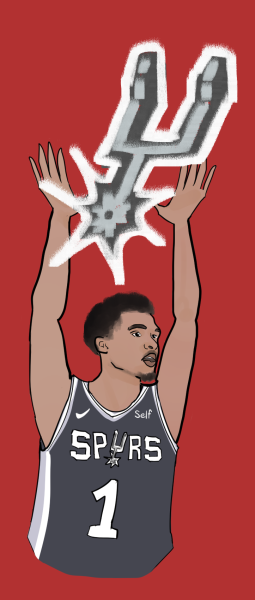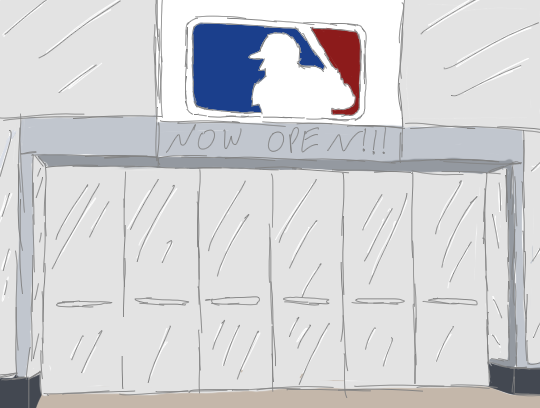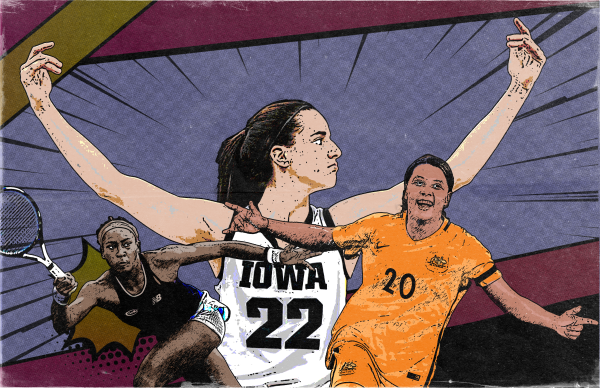Take me out to the ball game…whenever that is
MLB’s lockout is a classic tale of money and pride, and it’s not ending soon
Oh, November, please come back. The World Series this past season left us all hopeful. An Atlanta team hadn’t choked! Shohei Ohtani won MVP! All was right with the world, and baseball was ready for another quiet, peaceful offseason. This slumber lasted all of 30 calendar days before it was shattered. At 12:01 a.m. on Dec. 2, MLB officially went into a “Lockout” — the first since 1990.
Rumblings of a possible lockout had been ongoing for the last two seasons, but the sudden truth of the situation was as abrupt as it was avoidable. The 2021-22 lockout is already the longest in baseball history and has led to a delayed spring training schedule in Arizona and Florida. There are severe doubts that the regular season will start on time, with Opening Day currently scheduled for March 31.
In short, a lockout results from a labor dispute between the players and team owners of the MLB. This particular labor dispute has been especially nasty, with accusations and conspiracy theories flying left and right, a lack of compromise and a frustrating lack of progress towards a new deal overall.
The primary cause of this dispute is the Collective Bargaining Agreement or CBA. A CBA is a contract between the owners of the league and the Players Union. The agreement is massive in the individual leagues because it forms the rules regarding how players are employed. At the end of the day, no matter how high we place them, athletes are still employees of the organization. However, the biggest (and most contentious) part of the CBA is money. The CBA decides crucial things like how player salaries will be determined, how much a team can pay their players, and rules regarding items such as free agency.
Typically, there are not many issues regarding new CBAs. The MLB and MLBPA sign (or are supposed to sign) a new agreement every five years, and it has run smoothly for the better part of 25 years. During such conflicts, there are typically three options for the owners: The first is a Lockout, where players are barred from team facilities. The second is temporarily using the old CBA while negotiations continue. Or, the third, where the owners use the old CBA, but the players go on strike.
Negotiations started as early as August of last year but were quickly shut down due to issues stemming back to the pandemic season. After initially deciding on a ⅓ length schedule for ⅓ pay for players, the team owners requested to alter the deal to reduce player pay. Despite playing their games, the league argued that teams would lose millions of dollars of revenue for paying players. However, since the 1994 CBA, owners have earned more revenue than ever before, while the average MLB player salary has declined in recent years. Though they are the best in the world, most players (over 60%) have a salary of less than $1 million. Despite these drops, overall team revenue has tripled since 2001. Essentially, the league is making more money, but the players are not.
Another point of contention for the players has been the frankly awful free agency rules that have plagued the league for years. When a player is drafted, they are forced to stay with the team for seven years – by far the longest among the major American sports. While this may be a good thing for teams to evaluate their young players through what is undoubtedly the most advanced minor league system in sports, players hate it. Holding a player in a team for seven years means that they cannot leave in free agency, restricting them from making more money early on in their careers. While it is true that the most significant MLB contracts are far greater than any other American athlete not named Patrick Mahomes (See: Mike Trout), these are few and far between. The Players Union wants their young players to be paid more, and paid earlier.
These points of contention have led owners to make some pretty severe threats, with some offering to place a hard cap on the minor league staff. One proposal limited minor league staff from 180 players down to 150. While this might not seem like a big deal, this could eliminate around 900 minor league careers before they’ve even begun. The owners claim this is a cost-saving measure. However, cost is the least of their concerns at the moment, thanks to record revenue every year until 2020.
This foot-dragging by the owners has led the players into an almost open revolt, with many targeting Commissioner Rob Manfred. Multiple players have ripped into the commissioner since 2020, with some being downright insulting. Current Yankees pitcher Jameson Taillon called the negotiations “slimy, tone-deaf, greedy, lying, and overall out of touch” in a tweet in July; Travis Shaw, a current Free Agent, said that the MLB “should be embarrassed” by the stoppage.
Players argued that the owners deliberately tried to change the contract to stall negotiations further—leading to a shortened season. This claim led to a $500 million grievance filed by the players association, which is still pending. These arguments by the players mirror statements made by players against the League back in 1994 when they accused owners of conspiring with each other in free agency to limit the amount that big-name players could make. While these claims could be based in fact, some of them are pretty out there—and if they’re true, they could be devastating for the MLB’s reputation.
Already, the MLB can see the effects of the lockout. Players have stopped being tested for performance-enhancing drugs (PEDs) for the first time since 1994, spring training has already been delayed and the season is at serious risk for an on-time start of March 31.
On Dec. 1, less than 12 hours from the beginning of the lockout, the MLBPA and owners met in Dallas in one last-ditch effort to avoid a lockout. The negotiations lasted ten minutes. The sides met again in January – first on the 13 and then back-to-back on the 24 and 25. On Jan. 13, negotiations went nowhere, but the big news of the talk on Jan. 24 and 25 was that they didn’t go backward. The two-hour discussion on the 24 and the hour-long talk on the 25 were the longest the two sides had talked since the lockout.
The League asked for Federal Mediation on Feb. 3, hoping for the government to step in to tell both sides what to do. The Union denied the mediation request a day later. Progress was dead again. The Feb. 17 meeting lasted just 15 minutes, and all hopes of continuation were dead in the water. As of March 1, negotiations are currently ongoing, but recent proposals from the Union and owners have both been shut down.
No one is willing to back down, and the deadline to cancel games has passed. Multiple sources say that games will be canceled, and the owners were far more hostile during meetings on the 28. The owners announced they were willing to miss over a month of the season, and the players turned down their most recent offer. The question has shifted from if the season will be delayed to how far the season will be delayed. In this battle of rich, young athletes vs rich, old owners, neither side is backing down.
Who knows, maybe by the time this is published, all of what I’ve written will be a funny memory, with both sides agreeing to a last-minute deal. Perhaps both sides will have decided this argument is stupid and should just compromise. Maybe we’ll get a season. I wouldn’t bet on it, but just… Maybe.

Hey! I'm Caleb Reed, and I'm the new Sports Editor for the Trinitonian this year. I love all kinds of sports and I've got a passion for both commentary...

I am a senior Art and English double major from San José, California. I also have an accidental Medieval and Renaissance minor that I picked up through...

